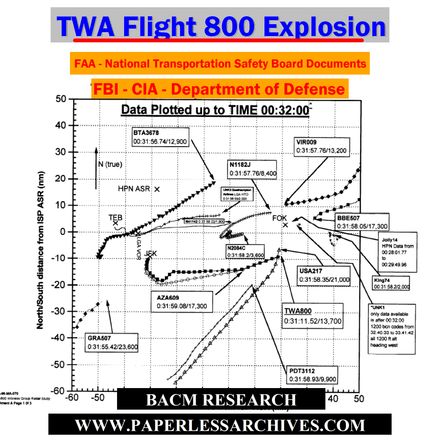Starting from:
$12.95
Home
World War II
World War II: German U-boat Captured Crew Interrogation & Intelligence Reports (1941-1945)-Download
World War II: German U-boat Captured Crew Interrogation & Intelligence Reports (1941-1945)-Download
World War II: German U-boat Captured Crew Interrogation & Intelligence Reports (1941-1945)
4,905 pages of documents produced and collected by the Department of the Navy, Office of the Chief of Naval Operations, Intelligence Division. Files centered on interrogations of German U-Boat crew members and documents related to obtaining and coordinating intelligence from captured German U-boat crews.
The primality of the material is of interrogations of the survivors of captured or sunk German U-Boats. Materials include notes and transcripts related to the interrogation of crew members. Included in these reports are the names of crew members, biographical information, information revealed, the history of the U-boat’s activity. Files include photos, translated transcripts of U-boat crew diaries and other captured U-Boat crew possessions.
German submarine U-Boats captured or destroyed covered include:
U-66
U-67
U-85
U-94
U-118
U-128
U-162
U-164
U-172
Highlights of actions between German U-boats and allied naval forces:
U-66
The U-66 during 10 patrols sank 33 ships. On 1 May 1944, U-66 came under attack by American ships from an antisubmarine hunter-killer group formed around USS Block Island. Three Fido homing torpedoes were dropped near the boat, and numerous aircraft from Block Island hunted for her.
On the morning of 6 May 1944, the destroyer escort USS Buckley found the submarine. After an exchange of gunfire and torpedoes, the Buckley rammed the submarine. With the two vessels stuck together, crewmembers from the U-66 climbed aboard the Buckley to create a diversion, while U-66's captain Gerhard Seehausen lead a group of his crewmembers in an effort to separate the two vessels. Hand-to-hand fighting broke out on the deck of the Buckley. The U-boat was able to separate from the Buckley and escape. The German crew members who were left behind on the Buckley were killed or captured.
The Buckley chased the U-66 firing its 3-inch guns at her. The U-66 turned and rammed and damaged the Buckley. Soon afterwards Seehausen ordered the scuttling of the U-66, to prevent the capture of the boat's equipment. Twenty-four U-66 crewmembers died during the encounter and 36 survived and were captured. Seehausen was not among the survivors.
U-85
On April 10, 1942, U-85 sank the Swedish freighter Christina Knudsen off the coast of New Jersey. On April 14 1942, the U-85 was sunk off the United States coast near Cape Hatteras by the USS Roper. Numerous men were observed in the water, but no rescue attempt was made until daylight. By then, there were no survivors among the 29 bodies floating in life jackets. Some of the bodies were wearing civilian clothes, carrying wallets with United States currency and identification cards. Bodies of the German crew were buried at National Cemetery, Hampton, Virginia.
This collection contains items savaged from the U-85 including personal photographs.
U-172
On March 4, 1943, U-172 sank the British cargo steamship SS City of Pretoria, killing all 145 passengers and crew aboard. Over the course of 6 patrols U-172 sank 28 ships. On its sixth patrol it faced off with a U.S. Navy sub hunter group, over a 27 hour period, the U-172 was attacked by Grumman TBF Avenger and Grumman F4F Wildcat aircraft from the escort carrier USS Bogue (CVE-9), and the American destroyers George E. Badger (DD-196), Clemson (DD-186), Osmond Ingram (DD-255) and Du Pont (DD-152). Thirteen of U-172's crew died, 46 survived the sinking.
U-94
In 10 patrols the U-94 sank 26 ships. On her 10th patrol off Haiti on the 28th of August 1942, she was sunk by depth charges dropped by the US PBY Catalina and ramming by the Canadian corvette HMCS Oakville.
U-162
During three war patrols, U-162 sank 14 vessels. However, on 3 September 1942, three British destroyers hunted U-162 down and sank her. Of a crew of fifty-one, only two died. The remainder were taken prisoner and sent to camps in the United States, where they remained for the rest of the war.

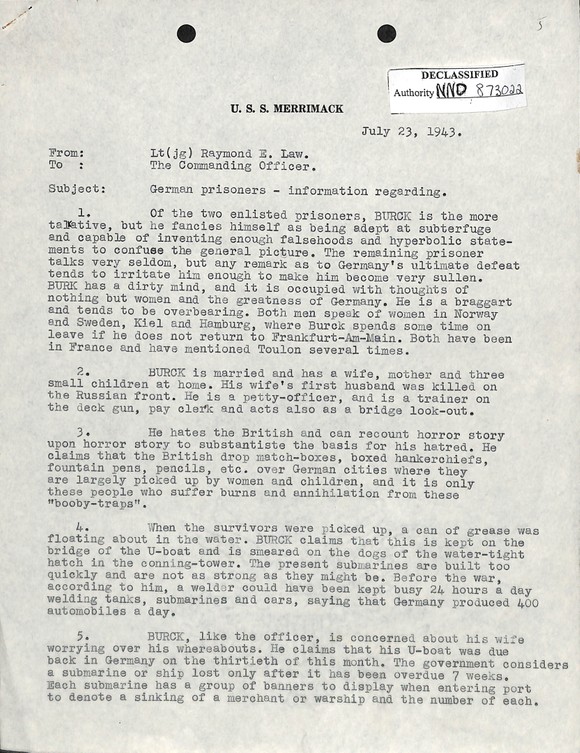
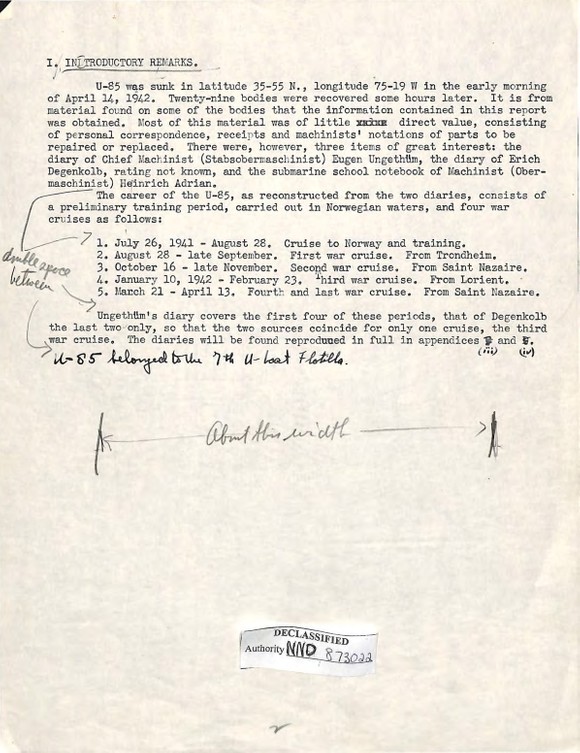

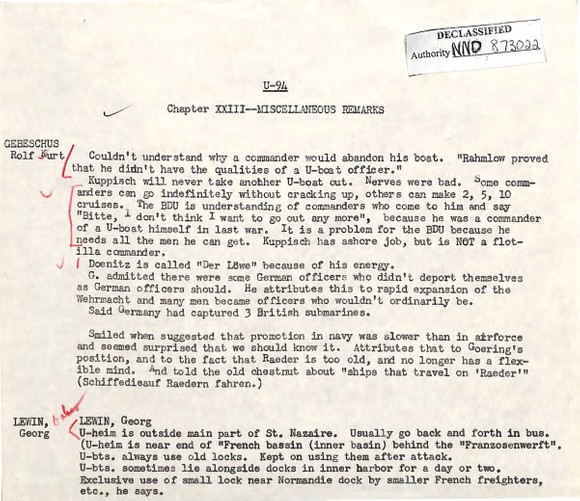
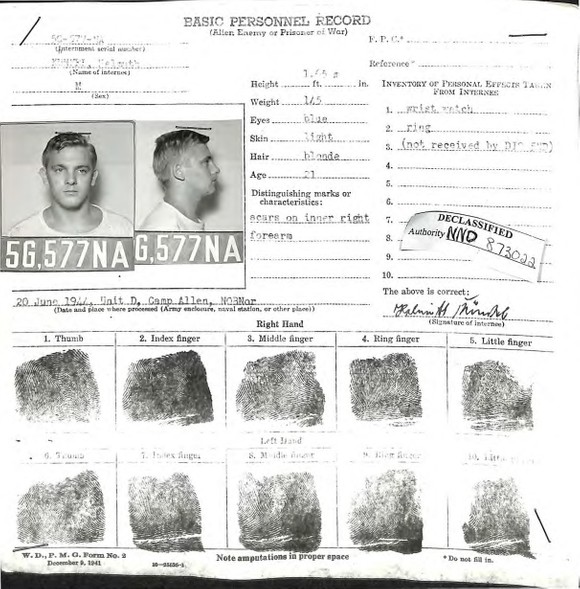
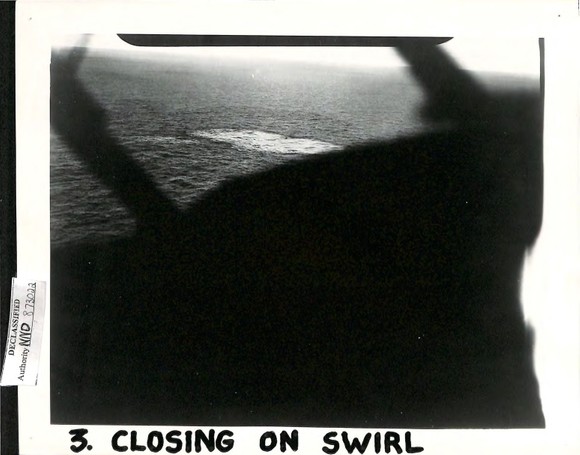


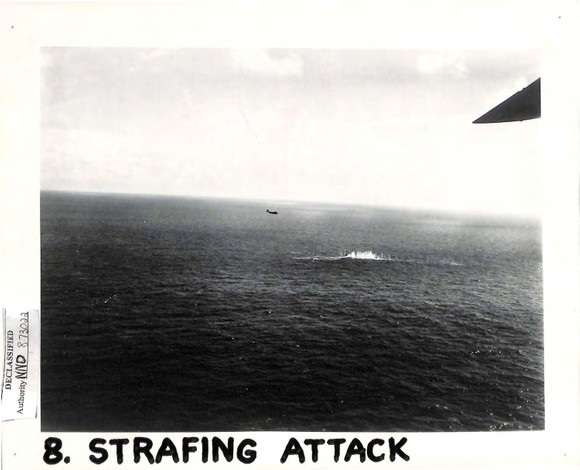
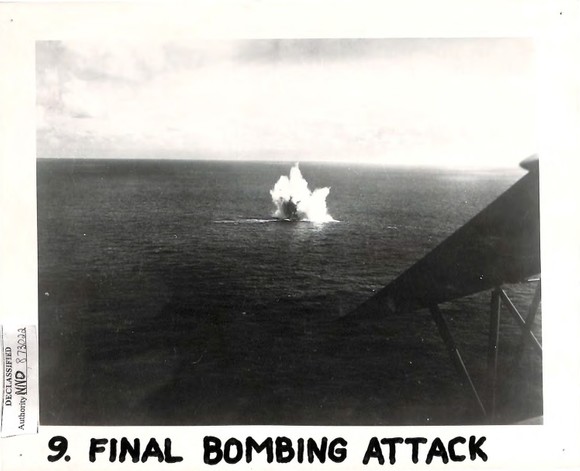


4,905 pages of documents produced and collected by the Department of the Navy, Office of the Chief of Naval Operations, Intelligence Division. Files centered on interrogations of German U-Boat crew members and documents related to obtaining and coordinating intelligence from captured German U-boat crews.
The primality of the material is of interrogations of the survivors of captured or sunk German U-Boats. Materials include notes and transcripts related to the interrogation of crew members. Included in these reports are the names of crew members, biographical information, information revealed, the history of the U-boat’s activity. Files include photos, translated transcripts of U-boat crew diaries and other captured U-Boat crew possessions.
German submarine U-Boats captured or destroyed covered include:
U-66
U-67
U-85
U-94
U-118
U-128
U-162
U-164
U-172
Highlights of actions between German U-boats and allied naval forces:
U-66
The U-66 during 10 patrols sank 33 ships. On 1 May 1944, U-66 came under attack by American ships from an antisubmarine hunter-killer group formed around USS Block Island. Three Fido homing torpedoes were dropped near the boat, and numerous aircraft from Block Island hunted for her.
On the morning of 6 May 1944, the destroyer escort USS Buckley found the submarine. After an exchange of gunfire and torpedoes, the Buckley rammed the submarine. With the two vessels stuck together, crewmembers from the U-66 climbed aboard the Buckley to create a diversion, while U-66's captain Gerhard Seehausen lead a group of his crewmembers in an effort to separate the two vessels. Hand-to-hand fighting broke out on the deck of the Buckley. The U-boat was able to separate from the Buckley and escape. The German crew members who were left behind on the Buckley were killed or captured.
The Buckley chased the U-66 firing its 3-inch guns at her. The U-66 turned and rammed and damaged the Buckley. Soon afterwards Seehausen ordered the scuttling of the U-66, to prevent the capture of the boat's equipment. Twenty-four U-66 crewmembers died during the encounter and 36 survived and were captured. Seehausen was not among the survivors.
U-85
On April 10, 1942, U-85 sank the Swedish freighter Christina Knudsen off the coast of New Jersey. On April 14 1942, the U-85 was sunk off the United States coast near Cape Hatteras by the USS Roper. Numerous men were observed in the water, but no rescue attempt was made until daylight. By then, there were no survivors among the 29 bodies floating in life jackets. Some of the bodies were wearing civilian clothes, carrying wallets with United States currency and identification cards. Bodies of the German crew were buried at National Cemetery, Hampton, Virginia.
This collection contains items savaged from the U-85 including personal photographs.
U-172
On March 4, 1943, U-172 sank the British cargo steamship SS City of Pretoria, killing all 145 passengers and crew aboard. Over the course of 6 patrols U-172 sank 28 ships. On its sixth patrol it faced off with a U.S. Navy sub hunter group, over a 27 hour period, the U-172 was attacked by Grumman TBF Avenger and Grumman F4F Wildcat aircraft from the escort carrier USS Bogue (CVE-9), and the American destroyers George E. Badger (DD-196), Clemson (DD-186), Osmond Ingram (DD-255) and Du Pont (DD-152). Thirteen of U-172's crew died, 46 survived the sinking.
U-94
In 10 patrols the U-94 sank 26 ships. On her 10th patrol off Haiti on the 28th of August 1942, she was sunk by depth charges dropped by the US PBY Catalina and ramming by the Canadian corvette HMCS Oakville.
U-162
During three war patrols, U-162 sank 14 vessels. However, on 3 September 1942, three British destroyers hunted U-162 down and sank her. Of a crew of fifty-one, only two died. The remainder were taken prisoner and sent to camps in the United States, where they remained for the rest of the war.













1 file (481.6MB)

